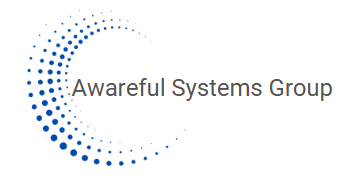Terms for Confluent Communication
The Terms for Confluent Communication offer new distinctions and increased clarity about communication and engagement in complex human ecosystems.
Confluent Communication
Confluent Communication practices expand formal and informal human communications and engagements by bringing forth ‘the unthought known’. Inherent in most traditional forms of knowledge exchange is existing but unacknowledged ambiguity. Confluent Communication leverages this ambiguity to bring forth collective ideas, solutions, and agreements outside the bounds of what is currently known and named.
Decision Making
Decision Making in complex adaptive systems is a continual process influenced by actions, reactions and the persistence of emergence, self-organization, and adaptation. Effective decision making in a CAS seeks multiple perspectives and diverse sources of information and data in order to support experiments, learn from feedback, and adapt to changing circumstances.
Feedback
Feedback, or loops, is the reciprocal effect of one system on another. Negative feedback occurs when two systems dampen each other’s output. Positive feedback happens when two systems amplify each other. In complex adaptive human systems, ‘process’ feedback helps us understand how to improve performance, whereas, ‘outcome’ feedback – knowledge of results – is limited in performance improvement.
Generative
A generative process encourages “looking” beyond current conditions to nurture and guide the birth of new ways of thinking and doing. Generative engagements lead to discovery of new ideas, behaviors, practices and unanticipated sources of value that could not have been predicted in advance.
Inquiry
Inquiry in a CAS requires a commitment to capturing and reflecting on information and responses that are both formed and forming, engaging with familiar and unfamiliar ideas, including new people and approaches, and engaging with experimentation. Inquiry helps to identify initial conditions and constantly changing conditions as ecosystems develop. Inquiry and Generative are complementary concepts.
Liberating Structures
A set of collected micro structures for meetings and team engagements, selected for the purpose of improving information exchange and idea generation. The goal is to flatten power between participants and allow for bottom up and fringe-in voices.
Meta-Listening
Meta Listening opens up an “unspecified” space of meaning, where individuals can actively consider and reflect on the meaning of how, why and what people are communicating. For example, does a specific choice of words, documents, vehicles for communication suggest the existence or influence of an implied metaphor in addition to the message being shared? Does everyone understand and accept the metaphor or is it signaling the emergence of something unfamiliar?
Noise
Noise in communication systems is an error or undesired random disturbance of a useful information signal or piece of data. Noise in human exchanges can be viewed as unimportant, distracting or confusing information or feedback. However, it’s also possible that noise may be an indicator of something worth noting or emerging in complex adaptive systems.
Quorum Sensing
Quorum sensing is a biological mechanism,first observed in the mid-1960s by microbiologist Alexander Tomasz during his studies of Streptococcus pneumoniae. The term was formalized to identify the activity of bacteria populations to communicate and coordinate group behavior. We apply Quorum Sensing to explain group behavior as individuals converge on an acceptable pattern of actions, and engage in organizational wayfinding in search of an agreed set of actions or goal.
Redintegration
Redintegration refers to the restoration of the whole of something from a part of it. The everyday phenomenon of redintegration occurs when a small part of a memory reminds a person of the entire memory, for example, recalling an entire song and the circumstances of hearing it for the first time when just a few notes are played. Although artists have practice with the use of sensory experiences to assist redintegration, the psychological study of redintegration is dependent on the capacity to study and measure it, thus most theories of redintegration refer to semantic stimulus.
Sense-making
Sense-making is a fluid process in which individuals and/or groups work together to create a shared interpretation and agreed upon understanding of the circumstances in which they find themselves.
Signal
A signal is most frequently used as a technical concept to reference how data is carried from one location to another, e.g., between devices or from one network to another network. Signals in organization ecosystems can also carry subtle information in the course of human interactions and exchange of knowledge. It is the key component behind the transmission of virtually all forms of communication.
Somatic Attention
Somatic Attention places emphasis on physical signals within the body that are often unintentionally shared with others. Recognizing a somatic response enables detachment from the actual response and provides a path to a more productive engagement with a group or individual. When all members of a group become attuned to their own physical sensations and learn to recognize and respond to cues indicating another person’s somatic responses, they can achieve an advanced level of somatic attention. This involves a heightened awareness and sensitivity to physical sensations and can improve communication and empathy within the group.
Unthought Known
The psychoanalyst Christopher Bollas created the concept of the “unthought known”, to describe the state of “not-knowing-yet-experiencing”. In an organizational ecosystem, the concept of the Unthought Known is not meant to be applied in a therapeutic sense. Rather, it is the value of recognizing this not-knowing-yet-experiencing in order to help members of a group discover a shared truth that exists but has not yet been acknowledged, seen, or named.
Visual Engagement
Visual engagement involves co-creating images or visualizations that serve as conversation (engagement) artifacts, using both verbal and nonverbal communication. It places particular emphasis on visuals as a tool for communication, allowing individuals to filter out internal and external distractions and access the nonverbal and ‘unthought known’. The ambiguity of visual marks allows for agreement and action even if a concrete articulation has not been reached.”
